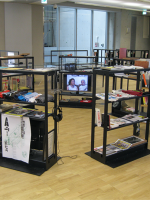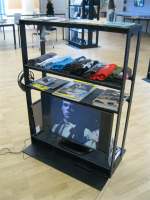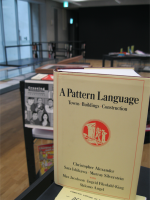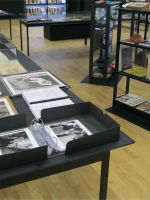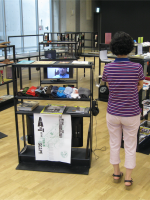-
Contact Points: Field Notes towards Freedom
2006-ongoingVarious artifacts amassed from 2006-ongoing40' x 40', displays w/various dimensionsby tammy ko Robinson ϟ Jerome Reyes
This exhibition highlights the larger Contact Points Archive Project housed at Asia Culture Center, Gwangju, Korea through a configuration of seven taxonomies with contributions from the collection’s more than 40 individual and organizational donors and historical agents. Focused on the intertextual and affective relationships across objects and ideas of socio-political change as well as the diacritics of the artifact itself, this exhibition presents a curriculum of freedom written by Asians in migration.
The experience of the visitor is co-authored by the following: artifacts of some of the oldest Asian American arts and cultural organizations in the United States such as Kearny Street Workshop and Asian American Studies at San Francisco State University; unprecedented intergenerational and interethnic solidarities coalesced around the Third World Strike and I-Hotel anti-eviction movement; and correspondences across the Pacific dating from 1968 to the present day between Chicago, Manila, Bangkok, Gwangju, San Francisco, Los Angeles, Taipei, and Seoul.
Contact Points: Field Notes towards Freedom takes as its inspiration the “pattern language” as inspired by architects Sarah Ishikawa and John Liu of the various iterations of cultural productions and institution-building that leans relentlessly towards community designed forms of living. They are staged here as both decades-old and recently realized adjacencies comprised of: the community center (1), third world college (2), community housing (3), asian arts complex (4), solidarity bookstore (5), sanctuary and clinic (6), and the lending library (7). Situated within multi-sited movements with linkages to organizations once housed within the San Francisco International Hotel street intersection of Jackson and Kearny, there are left tracings of intimate proximities forging a new syntax where what remains are books, curriculum, the right to not move, the right to play, and the right to sunshine.
Visitors are invited to pay particular attention to the social life of the objects created by artist-activists contributing to a multiply localized understanding of contemporaneity while ever refining their contemporary art praxis as architects, bilingual teachers, bookstore owners, children’s book authors, curriculum writers, graphic designers, librarians, novelists, publishers, and visual anthropologists in order to expand the circulation of freedom-seeking material culture.






